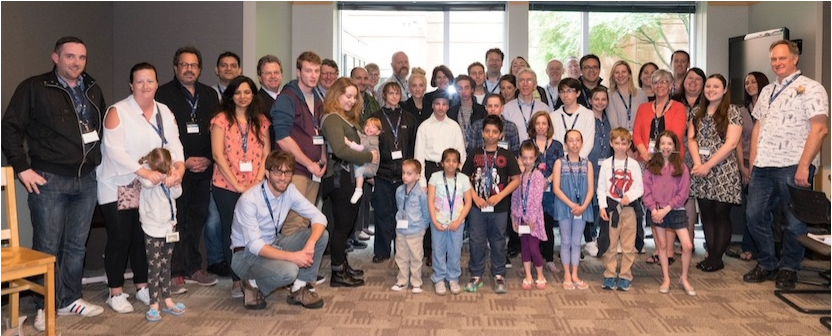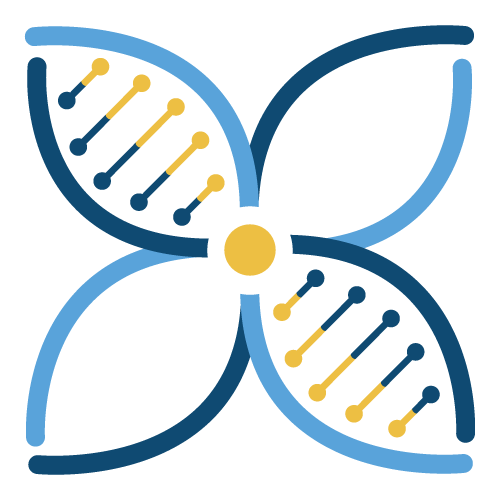Community Resources
Patient-Centered Research Strategy Overview

Our Plan to Help People with Bloom Syndrome (BSyn)
The BSA’s mission is to connect, educate, and support the international Bloom syndrome community and stimulate research that leads to longer, healthier lives. We have developed a patient-centered research strategy to achieve the following objectives:
- Clarify the BSA’s research priorities, grounded in the lived experiences and needs of the Bloom syndrome community
- Inform the selection, funding, and evaluation of research projects, collaborations, and partnerships
- Promote transparency and accountability in research and clinical efforts
- Engage persons with Bloom syndrome, families, and other stakeholders, from academia to industry to policymakers
The name for our research strategy is SECURE. Read more about it, below.
A Simple Guide to the SECURE Strategy
S: We want to be Safe
Learn what people with BSyn worry about
We want to understand what people with BSyn and their families are afraid of – from birth to old age.
Why: This helps us focus research on what matters most to families.
How: We’ll ask people to share their experiences in a special registry (like a medical journal) and study their journey.
Study how things like sunlight, X-rays, and smoking affect people with BSyn
Why: These might make cancer risks worse for people with BSyn.
How: We’ll support scientists who study this and ask people about their habits (like diet or sun exposure).
Test cancer treatments to find safe doses for BSyn patients
Some people with BSyn can handle normal treatment. Others get very sick from it.
Why: We need safer treatments that still work.
How: Collect data from real patients, test drugs in labs, and talk to doctors.
Find better ways to check for cancer early
Why: Catching cancer early can save lives, but tests must be safe for people with BSyn.
How: Study which checkups people are already doing and what works best.
Share what we learn with families and doctors
Why: People need clear, up-to-date info to make good health decisions.
How: Update our handbook, hold webinars, and share info in many languages.
E: We want Effective treatments
Try existing drugs that might help BSyn
Why: Testing safe, approved drugs could lead to quicker treatments.
How: Use lab tests and work with experts to find drugs that help.
Work toward a cure for BSyn
Why: A cure would stop the disease and prevent cancer.
How: Study the gene that causes BSyn and support early research like gene therapy.
C: We will Communicate and work together
Talk to people with BSyn and their families
Why: Strong communities help research grow.
How: Host meetings, support groups, and make sure families have a voice.
Work with doctors and researchers
Why: Scientists and doctors need to work together to help people with BSyn.
How: Host talks, share our data, and support teamwork across hospitals.
Connect with other rare disease groups
Why: Working together helps everyone get stronger.
How: Join rare disease networks and share tools.
Talk to the public, media, and government
Why: More awareness brings more support and money for research.
How: Share stories, talk to leaders, and grow our network.
U: We want to Understand BSyn better
Create a registry to track BSyn
Why: Keeping track of people’s health helps doctors learn more and prepare for trials.
How: Build a secure, easy-to-use system to collect data.
Study how BSyn works
Why: Learning how BSyn causes cancer helps us find better treatments.
How: Support scientists who study BSyn in the lab.
Show how BSyn helps cancer research
Why: Studying BSyn might help scientists understand cancer better in general.
R: We will Recruit more patients, researchers and others who can help us
Find more people with BSyn around the world
Why: More people means better research.
How: Raise awareness, help doctors diagnose it, and build centers of care.
Find more doctors and researchers
Why: BSyn is complicated and needs a team of experts.
How: Create centers where care, research, and family support come together.
Get more support from volunteers and donors
Why: Research needs people and money to grow.
How: Share stories and build strong fundraising programs.
E: We want to be actively Engaged in BSyn research and fundraising
Take part in studies
Why: The more people share data and samples, the more we can learn.
How: Help families understand studies and share results with them.
Help decide what studies we do
Why: Families know best what questions matter most.
How: Let families join planning groups and give feedback.
Share how research changes lives
Why: Personal stories show why research matters.
How: Collect and share stories in reports and videos.
